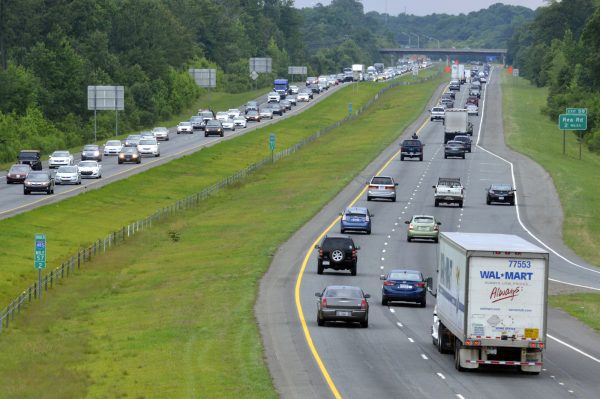Charlotteans got 46 hours back from traffic last year

It’s obvious that there were a lot fewer cars on the road last year, as we worked from home, kept kids out of school and stopped driving to sports games, concerts and dinners with friends. But you still might be surprised just how much time Charlotte drivers recovered from congestion: Nearly two full days.
That’s according to the 2020 Traffic Index from TomTom, which tracks congestion on the roadways of hundreds of cities worldwide. Unsurprisingly, the company found traffic fell off a cliff globally last year as the covid-19 pandemic took hold.
“This year we observed a huge drop in urban congestion levels around the world unlike anything we’ve seen before,” the company said. Traffic fell in nearly every single city TomTom tracks, with the exception of a dozen cities in nations mostly that were less hard-hit, like New Zealand and Taiwan.
[Autonomous vehicles, flying taxis and…buses? Balancing present and future transit needs]
It’s unclear what a return to “normalcy” might look like, or how long gloriously uncrowded days on I-77, I-85, Wilkinson Boulevard, Providence Road and other usually clogged thoroughfares might last. Even after the pandemic, many workers might remain fully remote, come in only a few days a week, or use flexible hours to commute on off-times to avoid rush hours.
Here’s what lower traffic levels this year meant for Charlotteans, in four numbers:
55 hours
That’s how much extra time Charlotte drivers spent stuck in traffic last year, according to TomTom’s average estimate. It sounds like a lot – more than two days.
But it’s barely more than half the number of hours we were fuming behind the wheel in 2019.
Charlotte traffic has been climbing steadily in recent years: We saw an average of 94 lost hours in 2017, 96 hours in 2018 and 101 hours in 2019.
The dramatic fall in traffic means we got an average of 46 hours of our lives back, according to TomTom.
71% and 53%
The most dramatic drop in traffic happened in April, after lockdown orders were implemented in mid-March. Morning and afternoon rush hour traffic fell by more than 80%.
But as late as December, after rebounding slightly in the summer, rush hour congestion was still down dramatically: 71% lower in the morning and 53% lower in the afternoon compared to 2019, according to TomTom’s average estimates.
135
That’s the number of days when congestion in Charlotte was at least 50% less in 2020 than the same day in 2019.
The shift in travel patterns we’ve seen is likely to persist for years. You can read the full TomTom report for Charlotte, and see how we stack up to other cities, here.